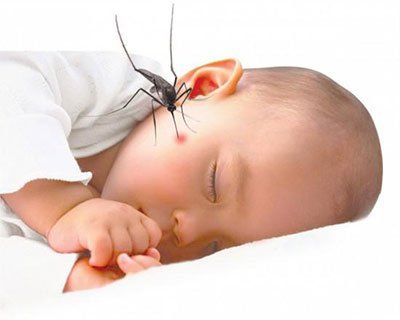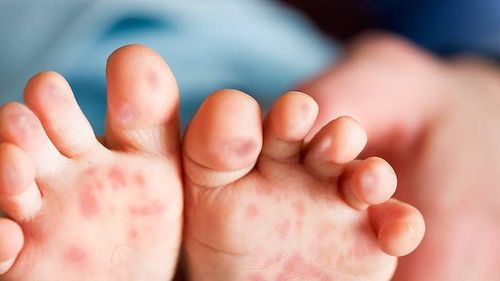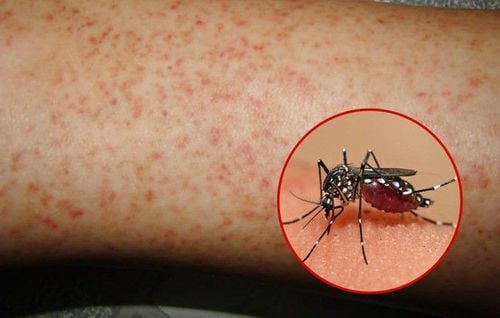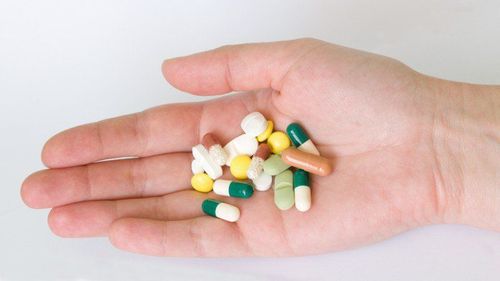This is an automatically translated article.
The article was written by Specialist Doctor I Le Tuyet Nga - Pediatric Center - Vinmec Times City International General Hospital.Dengue hemorrhagic fever is a disease acquired when infected with the dengue virus by the mosquito Aedes aegypti, also known as the mosquito bite from an infected person to a healthy person. This disease has been recognized since the 13th century, has occurred in more than 100 countries with the number of infections reaching 50-1000 cases per year. The World Health Organization (WHO) classifies dengue fever as a group of dangerous infectious diseases that need attention.
1. Why is dengue fever dangerous?
Dengue virus causes a decrease in the number of platelets in the blood. Platelets are components that help blood to clot when it exits when the walls of the blood vessels stop bleeding. If a low platelet count can cause uncontrollable bleeding, if bleeding in your internal organs can be life-threatening.
Dengue fever also increases vascular permeability, causing plasma in the blood to escape, causing hemoptysis, leading to a decrease in circulating blood volume, hypotension and shock.

Sốt xuất huyết gây nguy hiểm cho người lớn và trẻ nhỏ
2. So what will the warning signs of dengue fever look like?
In mild disease, the patient has symptoms:
Sudden high fever of 39-40 degrees Celsius, lasting 2-7 days, difficult to reduce fever. Severe headache in the forehead area, behind the eyeball. There may be a rash, a rash. In severe disease, including the above signs and one or more of the following signs:
Signs of bleeding: Skin petechiae, nosebleeds, bleeding gums, bruises at injection site, vomiting/vomiting bleeding, black stools (due to internal bleeding). Abdominal pain, nausea, cold limbs, palpitations, panic (shock syndrome due to internal bleeding causing blood loss, low blood pressure), if not given emergency and timely treatment, can lead to death . Dengue fever, if not noticed, will easily be confused with common febrile diseases, it will be very dangerous, so based on any signs to distinguish.

Cần lưu ý các dấu hiệu của bệnh sốt xuất huyết
3. Distinguishing dengue fever from common fever
Dengue fever will usually develop through three stages:In the first 2-3 days: The patient has a high fever continuously, it is difficult to reduce fever, headache, body aches... At this time, the symptoms of dengue fever are the same. like other viral fevers and can only be differentiated by testing. Fever is the body's response to pathogens, the degree of fever is high or low depending on the body's strong or weak response, a temperature exceeding 37.5 degrees Celsius is a fever, so some patients have dengue fever. Blood may only have a slight fever so don't pay attention. From the end of the 3rd to the 7th day: The patient begins to recover from fever but may appear complications such as increased vascular permeability causing hemoconcentration, thrombocytopenia, may cause hemorrhagic fever rash in the body. Different levels. Some patients started to have abnormal bleeding due to thrombocytopenia: nosebleeds, bleeding gums, bleeding under the skin, irregular menstrual periods, vomiting blood or passing black stools... 7th: The above symptoms will recover, the patient may appear skin rashes and itching. Itchiness may persist for a few days. For typhus, other viral fevers:
The patient has a high fever but is intermittent fever, accompanied by inflammatory symptoms in the upper respiratory tract such as: Cough, runny nose, sore throat, body aches, possibly With or without rash... It can be seen that, with the characteristics of high fever with muscle aches, headache, rash..., it is easy to recognize that almost dengue hemorrhagic fever is very similar to other forms of viral fever. or other common typhus. To distinguish the disease, it is necessary to monitor the symptoms and special signs: the red rashes in typhus will disappear quickly after the skin tightening is performed. If the rash persists or goes away very slowly, it could be dengue fever rash. The best way to distinguish the types of fever is to go to medical facilities for blood tests. The results of the blood count test in dengue hemorrhagic fever will show a decrease in white blood cells and platelets, and a positive Test Dengue antigen test (+). As for the remaining types of fever, the blood count is almost normal, and the Dengue antigen test (-) is negative. The most remarkable thing is that with typhus or common viral fever, when the fever subsides, the disease has gradually recovered. However, with dengue hemorrhagic fever, when the fever subsides, it is the beginning of a dangerous complication stage, it is necessary to go to a medical facility for daily check-ups and tests to detect complications early and treat them promptly. time.
4. 3 stages of dengue disease progression
Stage 1: Symptoms are often difficult to distinguish from common viral fevers: the patient has a sudden high fever of 39-40 degrees Celsius in the first 1 or 2 days. It is necessary to take the patient to medical centers for Dengue NS1 Ag test immediately and prompt treatment if the result is positive.
Stage 2: From the 3rd to the 7th day since fever, very dangerous period, severe symptoms of dengue fever begin to be noticed: subcutaneous hemorrhage on the front of both legs , the inside of the arms, abdomen, thighs; epistaxis; bleeding tooth.
More serious complications will appear: the patient may have internal bleeding, pleural or peritoneal effusion, gastrointestinal bleeding or more seriously, cerebral hemorrhage. At this stage, the patient needs to be closely monitored and the platelets are tested regularly.
Stage 3: The recovery phase, the patient's fever is gone and his condition starts to get better, he has an appetite, hemodynamic stability starts to stabilize and the patient urinates a lot, platelet tests gradually increase. and return to normal.

Xuất huyết dưới da là triệu chứng ở giai đoạn 2 của bệnh sốt xuất huyết
5. 6 danger signs of dengue fever
Bleeding: Appearance of red dots or spots on the skin; nose bleeding, gums; vomiting blood; pass black stools; irregular periods/vaginal bleeding; Continuous vomiting; Severe abdominal pain; Drowsiness, confusion or convulsions; Cyan, cold and damp hands and feet; Shortness of breath. In addition, if the patient has a persistently high fever that cannot be controlled with conventional antipyretics, they should also go to the hospital for treatment as soon as possible.
Cases with low platelets also need to be hospitalized for monitoring, to avoid the risk of bleeding, brain hemorrhage, and internal bleeding.
6. 2 deadly complications of dengue fever
Low platelets: complications of low platelets do not make the body tired and lethargic. Therefore, many healthy people are subjective and do not follow up until massive bleeding occurs. Hemoconcentration: Complications of hemoconcentration are closely related to symptoms of fatigue, liver pain, vomiting, nausea, lethargy, and lethargy, usually lasting 24-48 hours.
7. Dengue fever prevention
Dengue fever is transmitted by mosquitoes, so the main prevention solutions are to prevent mosquito bites and ensure a clean environment to prevent mosquitoes from multiplying, specifically as follows:
Cover all water containers that can contain larva, larva such as: drinking water tanks, wells, jars, jars, drums, toilet water tanks, barrels, buckets, pots, other tools such as cans, bottles, jars, ... so that mosquitoes do not enter to lay eggs. Take regular measures to kill larva/larva by placing fish in a large container of water; wash small and medium water containers such as bowls, vases, water trays of refrigerators or air conditioners, drains, livestock/poultry troughs, bonsai tanks; turn tools that do not contain water upside down; change the water of flower vases/cotton vases; put salt, oil or chemicals to kill larva/larvae in the bowl of water under the counter, standing water holes. Remove, turn upside down waste materials, natural water holes that do not allow mosquitoes to lay eggs such as bottles, jars, jars, bottle fragments, broken jars, coconut shells, broken jars, old tires / tires, bamboo holes , sheaths of leaves... Sleep under nets, wear long clothes to prevent mosquito bites even during the day. Do not let children play in a dark place, apply mosquito repellent. Actively coordinate with the health sector in chemical spraying for epidemic prevention and control. When fever comes to Russia Dengue fever and regularly wash and remove stagnant water. In addition to the above instructions, please note that you should always closely monitor your body temperature, immediately notify your doctor if you notice signs of fever, absolutely do not arbitrarily take medicine without a doctor's prescription. The pediatric department at Vinmec International General Hospital is the address for receiving and examining diseases that infants and young children are susceptible to: viral fever, bacterial fever, otitis media, pneumonia in children ,....With modern equipment, sterile space, minimizing the impact as well as the risk of disease spread. Along with that is the dedication from the doctors with professional experience with pediatric patients, making the examination no longer a concern of the parents.
Please dial HOTLINE for more information or register for an appointment HERE. Download MyVinmec app to make appointments faster and to manage your bookings easily.













